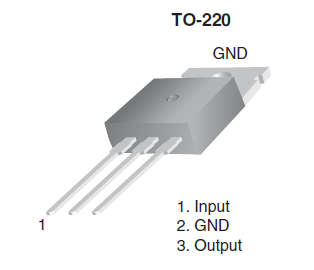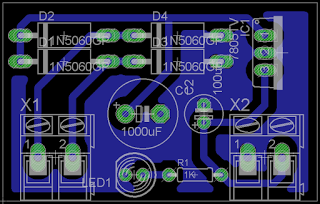In most of our electronic products or projects we need a +5V power supply for converting mains AC voltage to a regulated DC voltage. For making a power supply designing of each and every component is essential. Here I’m going to discuss the designing of regulated 5V Power Supply.
Let’s start with very basic things the choosing of components
Component List :
- Step down transformer T1 (0-6V)
- Voltage regulator U1: LM7805
- Capacitors C1: 1000uF/25V and C2: 100uf/16V
- Diodes DB1 1N4007 Qty. 4 (you can use bridge also)
Circuit Diagram


This series of fixed-voltage integrated-circuit voltage regulators is designed for a wide range of applications. These applications include on-card regulation for elimination of noise and distribution problems associated with single-point regulation. Each of these regulators can deliver up to 1.5 A of output current. The internal current-limiting and thermal-shutdown features of these regulators essentially make them immune to overload in addition to use as fixed-voltage regulators, these devices can be used with external components to obtain adjustable output voltages and currents, and also can be used as the power-pass element in precision regulators.
Power Dissipation and heating of regulator
As this is linear regulator all the excess voltage will drop across the linear regulator so always keep input voltage near 6-8V.
Example:
If 12V input is used for 5V regulator at 500mAmp load the power dissipation will be
Pd = (12-5) x 500m
Pd = 7 x 500m
Pd = 3.5 Watt (This will cause huge heating)
PCB Layout

Linear vs Switching Regulator
Linear Regulator
Linear regulators use linear, non-switching techniques to regulate the voltage output from the power supply. The regulator’s resistance varies according to the load and results in a constant output voltage.
All linear regulators require an input voltage at least some minimum amount higher than the desired output voltage. That minimum amount is called the dropout voltage. A low-dropout or LDO regulator is a DC linear regulator which can regulate the output voltage even when the supply voltage is very close to the output voltage.
Linear regulators are a great choice for powering very low powered devices or applications where the difference between the input voltage and output voltage is small. They are a simple and cheap solution, but linear regulators are normally inefficient because the difference between the input voltage and regulated output voltage is continually dissipated as heat.
Low drop-out regulators (LDO) generate low current, well-regulated outputs and require very few external components.
Switching Regulator
Some of the key requirements of today’s power management solutions include less power consumption under various load conditions, less space, high reliability and wide input voltage. These requirements are driving the need for highly efficient, wide VIN, low quiescent current (IQ) switching regulators in a broad range of applications.
Switching regulators rapidly switches a series element on and off. They can operate with both synchronous and non-synchronous switches (FETs). These devices store the input energy temporarily and then releasing that energy to the output at a different voltage level. The switch’s duty cycle sets the amount of charge transferred to the load.
Switching regulators are efficient because the series element is either fully conducting or switched off so it dissipates almost no power. Switching regulators are able to generate output voltages that are higher than the input voltage or of opposite polarity, unlike linear regulators. The versatility of these converters allow configuration for buck, boost, buck-boost, flyback, inverting in isolated and non-isolated applications.
Integrated FET regulators are a subset of switching regulators. These microcircuits have integrated the power MOSFET and are considered a whole solution; whereas controllers employ external power MOSFETs. Both configurations are classified as switching regulators because they regulate the output voltage.





Responses